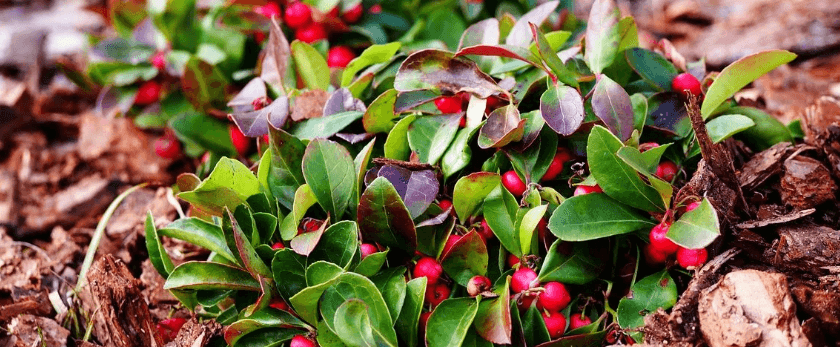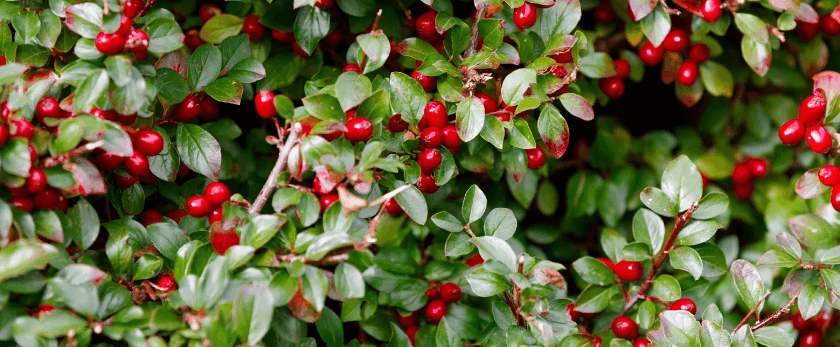Wintergreen, also known as Gaultheria procumbens, is a small evergreen shrub that is native to North America. It is a popular plant for its fragrant leaves and bright red berries, which are often used in teas, candies, and other products. But did you know that wintergreen is also a great addition to any garden? Not only does it add a pop of color and scent, but it also has many benefits for the environment. In this article, we will discuss how to grow wintergreen and why it is a great choice for a sustainable garden.
Caring for Wintergreen
Before we dive into the specifics of growing wintergreen, it is important to understand the basic care requirements for this plant. Here are some key points to keep in mind:
Watering
Wintergreen prefers moist, well-drained soil. It is important to keep the soil consistently moist, but not waterlogged. During hot and dry periods, make sure to water your wintergreen regularly to prevent the soil from drying out.
Light
Wintergreen thrives in partial shade to full shade. It can also tolerate some direct sunlight, but too much can cause the leaves to wilt and burn. If you are growing wintergreen indoors, make sure to place it near a window that receives indirect sunlight.
Soil
Wintergreen prefers acidic soil with a pH level between 4.5 and 6.0. If your soil is not naturally acidic, you can add organic matter such as pine needles or peat moss to lower the pH level. This will help your wintergreen thrive.
Fertilizer
Wintergreen does not require much fertilizer, but you can use a slow-release, organic fertilizer in the spring to give it a boost. Avoid using chemical fertilizers, as they can harm the plant and the environment.
Pruning
Pruning is not necessary for wintergreen, but you can trim it back in the spring to promote new growth and maintain its shape. Make sure to use clean and sharp pruning tools to prevent any damage to the plant.
Best Time to Grow Wintergreen
The best time to grow wintergreen is in the spring or fall. This is when the temperatures are mild and the soil is moist, which will help the plant establish itself. If you are growing wintergreen from seeds, it is best to start them indoors in the late winter and transplant them outside in the spring.

Common Problems with Wintergreen
While wintergreen is a relatively low-maintenance plant, it can still face some common problems. Here are a few to watch out for:
- Pests: Wintergreen is susceptible to pests such as aphids, spider mites, and scale insects. Regularly inspect your plant for any signs of infestation and treat it with organic pest control methods if needed.
- Diseases: Wintergreen can also be affected by fungal diseases such as leaf spot and powdery mildew. Make sure to keep the plant well-ventilated and avoid overhead watering to prevent these diseases.
- Winter damage: As the name suggests, wintergreen is a hardy plant that can withstand cold temperatures. However, if the winter is particularly harsh, the plant may suffer from frost damage. To prevent this, you can cover the plant with a layer of mulch or burlap during the winter months.
Why Choose Wintergreen for Your Garden?
Now that you know how to care for wintergreen, let's discuss why it is a great choice for your garden. Here are some reasons to consider:
- Attracts pollinators: Wintergreen produces small, white flowers that attract bees and other pollinators to your garden. This is beneficial for the overall health of your garden and the environment.
- Provides food for wildlife: The bright red berries of wintergreen are a favorite food for birds and other wildlife. By growing wintergreen, you are providing a food source for these animals and helping to maintain a balanced ecosystem.
- Low maintenance: As mentioned earlier, wintergreen is a low-maintenance plant that does not require much care. This makes it a great choice for busy gardeners or those who are new to gardening.
- Sustainable choice: Wintergreen is a native plant that is well-adapted to the local climate and soil conditions. By growing it in your garden, you are promoting biodiversity and supporting the local ecosystem.
- Versatile use: Wintergreen has many uses beyond just its ornamental value. You can use the leaves to make tea, the berries to make jam, and the essential oil for aromatherapy. This makes it a practical and multi-functional addition to your garden.
Responsible Disposal Methods
As with any plant, it is important to dispose of wintergreen properly to prevent it from becoming an invasive species. If you are growing wintergreen in your garden, make sure to deadhead the flowers and remove any fallen berries to prevent them from spreading. If you are removing the plant entirely, make sure to dig up the roots to prevent regrowth.
If you are using wintergreen for its essential oil, make sure to properly dispose of the plant material after extraction. Do not dump it in the garden or compost, as this can lead to the spread of the plant.
Conclusion
In conclusion, wintergreen is a versatile and sustainable plant that is easy to grow and has many benefits for the environment. By following the care tips mentioned in this article, you can successfully grow wintergreen in your garden and enjoy its beauty and usefulness. Remember to always dispose of the plant responsibly and spread the word about the importance of sustainable gardening practices. Let's all do our part in creating a greener and healthier planet for future generations.










